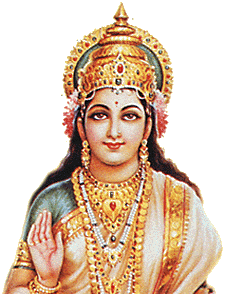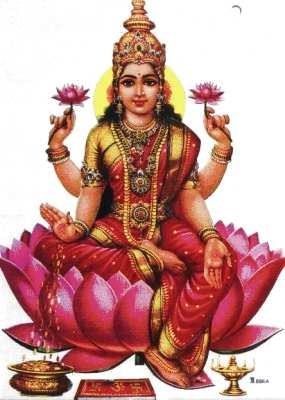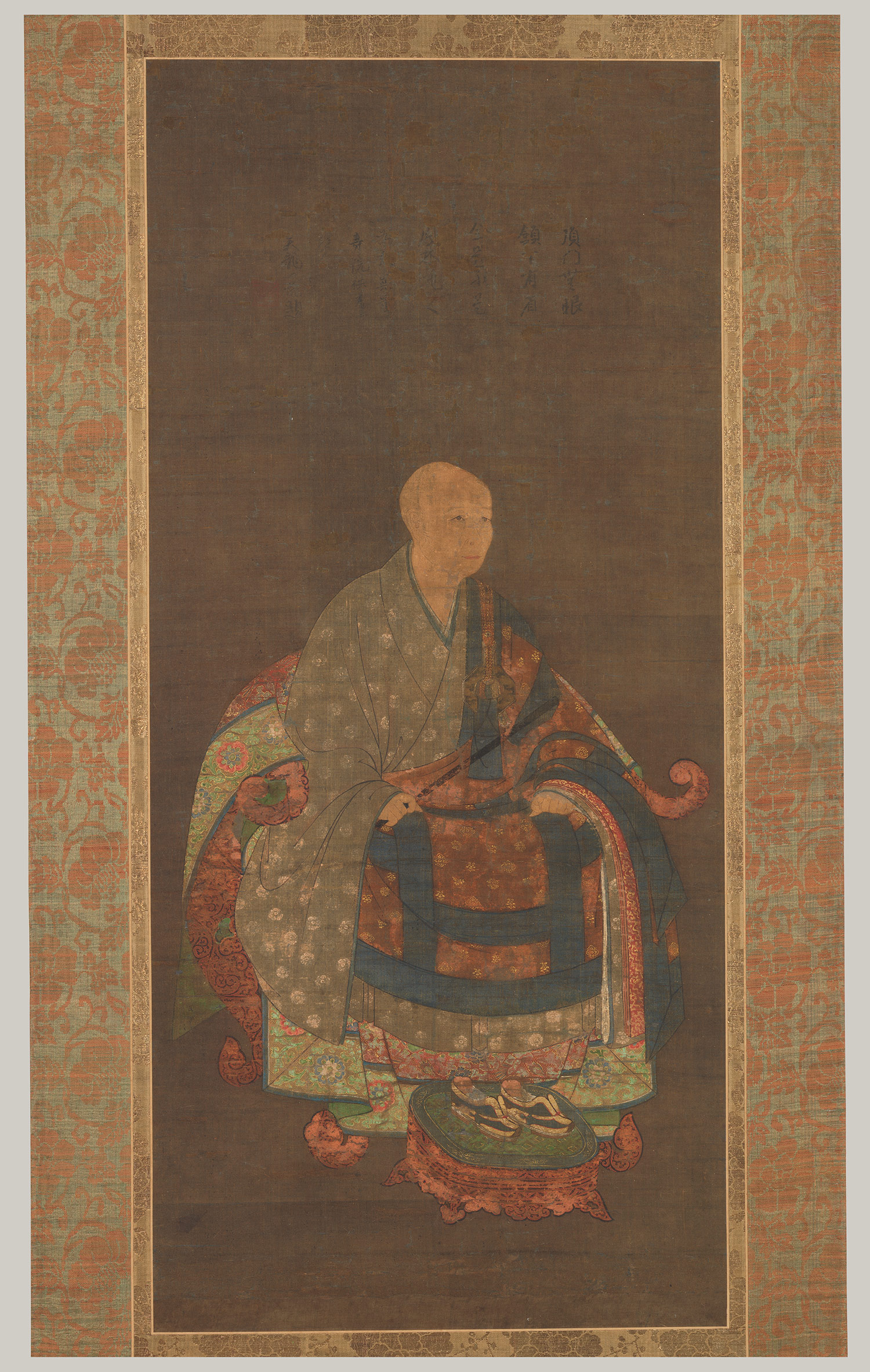History 8 India Manual questions
link titleReturn to History 8 Be sure that you sign your entry! Use only authoritative sources for external links. Cite Manual pages.
1. Describe the impact of the environment on the Rise and Fall of Indus Civilization.
2. Describe the elements of Harrapan civilization and give the material markers of the Mohenjo Daro civilization. http://www2.sjs.org/Beniretto/index.html
3. Who were the Aryans and what influence did they have upon traditional Indian culture? Include the caste system; its origins and effects.
4. Define and describe the "sacred geography" of India. Mention the importance of Prayag. Sacred Geography 2
5. Describe the three main Hindu gods and the three goddesses.
Goddesses: The three main Hindu goddesses are Parvati, Saraswati, and Lakshmi.
Parvati is a gentle goddess, an image of the dutiful wife. She is also an embodiment of shakti, which is the total energy of the universe. She is associated with Shiva

Saraswati is Brahma's wife and the goddess of knowledge, the arts, and creativity. In her hands she holds an instrument for music, a scroll for knowledge, and a sting of beads, which symbolize faith.

Lakshmi, Vishnu's wife,is the goddess of light, wealth, and beauty. She is a powerful symbol of love in Hindu tradition, and each time Vishnu is incarnated on earth, she is reborn as his wife

Francie Williams
Gods
Shiva is the destroyer and destroys all of the old or useless so that new can be created.

Brahma is the creator god.

Vishnu is the sustainer and preserver of creation.

gw
6. Who is Buddha?
Buddha is an Indian prince named Siddhartha Gautama. Buddha means "the enlightened one". In about 500 B.C, he preached a sermon that changed the world, one quote, "get rid of the desires and you will find the path to salvation"(106 Manual).This led to his teachings, the first set of principles, the Three Universal Truths.
 JC
JC
7. What are the Three Universal Truths?- One: Everything in life is temporary and always changing. Two: Since nothing is permanent, life is insufficient. People's wants become attached to something that will not last. Even if someone becomes content, it won't last. Knowing content will not last attains a source of suffering. Three: There is no eternal soul, what people call the soelf is just a collection of changing characteristics, parts assembled in a certain way like a charior, says Buddah. MZC
From the Manual page 106
8. What are the Four Noble Truths?
The Four Noble Truths are considered to be the essence of the teaching of Siddhartha Gautama, or Buddha.
The Four Noble Truths are (as agreed on by most modern scholars):
1. Life as we know it ultimately is or leads to suffering/uneasiness (dukkha) in one way or another. (Karma)
2. Suffering is caused by craving or envy.
3. Suffering ends when craving/envy ends.
4. Reaching this liberated state is achieved by following the path laid out by the Buddha.
To learn more about the Four Universal Truths, go to [1]
More simply put, the Four Noble Truths are
1. All life involves suffering
2. The cause of suffering is desire and attachment
3. To end suffering, end the desire and attachment
4. The way to overcome desire and attachment is to follow the Eightfold Path (Manual page 107)
An English translation of the exact Four Truths as taught by Buddha after he reached the stage of enlightenment as sourced from [2]:
- 1. "This is the noble truth of dukkha: birth is dukkha, aging is dukkha, illness is dukkha, death is dukkha; sorrow, lamentation, pain, grief and despair are dukkha; union with what is displeasing is dukkha; separation from what is pleasing is dukkha; not to get what one wants is dukkha; in brief, the five aggregates subject to clinging are dukkha."
- 2. "This is the noble truth of the origin of dukkha: it is this craving which leads to renewed existence, accompanied by delight and lust, seeking delight here and there, that is, craving for sensual pleasures, craving for existence, craving for extermination."
- 3. "This is the noble truth of the cessation of dukkha: it is the remainderless fading away and cessation of that same craving, the giving up and relinquishing of it, freedom from it, nonreliance on it."
- 4. "This is the noble truth of the way leading to the cessation of dukkha: it is the Noble Eightfold Path; that is, right view, right intention, right speech, right action, right livelihood, right effort, right mindfulness and right concentration."
Alex Daichman
9. What is the Eightfold Path?
- Describe in detail steps 1 & 2
The Eightfold Path is a code for living in the religion of Buddhism. It is believed to be the Middle Way that Buddha followed when he was in search of his own enlightenment. Step 1 is the right view. This means to really see everything as they really are and to realize The Four Noble Truths. You should see things through and understand the law of karma and karmic conditioning. If you have the right view you will have right thoughts and right actions. Step 2 is the right intention. Right intention refers to the kinds of mental energy that controls our actions. This means to have a commitment to ethical and mental improvement of your self. Buddha's distinguished types of right intentions are: the intention of renunciation, the intention of good will, and the intention of harmlessness.
From the Manual pg. 107
- Describe in detail steps 3 & 4
The Eightfold Path is considered the moderate Middle Way followed by Buddha in his search for enlightenment. It is a code for living in the Buddhist religion. Step 3 is the right speech and first principle of ethical conduct. Buddha explained right speech as follows: to abstain from false speech, especially not to tell deliberate lies and not to speak deceitfully, to abstain from slanderous speech and not to use words maliciously against others, to abstain from harsh words that offend or hurt others, and to abstain from idle chatter that lacks purpose or depth. Positively phrased, this means to tell the truth, to speak friendly, warm, and gently and to talk only when necessary. Step 4 is the right action, and second principle of ethical conduct. Unwholesome actions lead to unsound states of mind, while wholesome actions lead to sound states of mind. Again, the principle is explained in terms of abstinence. The right action means abstaining from action that harm other beings, especially against killing or committing suicide. The right action also means abstaining from taking what is not given, which mean no stealing, robbery, fraud, deceitfulness, or dishonesty. Positively formulated, right action means to act kindly and compassionately, to be honest, to respect the belongings of others. Here is a link to an external source with great information about The Eightfold Path and Buddhism in general: http://www.thebigview.com/buddhism/eightfoldpath.html
Source: The Manual, pg. 107 and http://www.thebigview.com/buddhism/
 -Chris Gillett
-Chris Gillett
- Describe in detail steps 5 & 6

Picture from www.elephantjournal.com
The Eightfold Path, or the Middle Way, is the Buddhist code of conduct and was used by the Buddha in his search for enlightenment. (CFAC p107)
Right Livelihood Step five of the Eightfold Path is right livelihood. To achieve right livelihood, one must gain all wealth lawfully, peacefully, and by a virtuous and honorable method. One must also fulfill the responsibilities of one’s phase in life. The Buddha discusses four actions one must abstain from. First, the Buddha teaches not to deal in weapons. He also says not to rear animals for butchery or participate in slave trade and prostitution. Thirdly, one must not work in a meat factory or slaughter of animals. Lastly, one must not sell intoxicants, poisons, alcohol or drugs.(CFAC p108)
Right Effort Step six of the Eightfold Path is right effort. Right effort is necessary to achieve all the other steps in the eight-fold path. Effort is essential to achieve anything, but misguided effort will result in chaos. For example, effort can cause jealousy and hostility or compassion and sympathy. (CFAC p108)
To learn more go to http://www.thebigview.com/buddhism/eightfoldpath.html
N. Gonzalez
- Describe in detail steps 7 & 8
Right Mindfulness: Right Mindfulness, step seven of the Eightfold Path, is based in clear perception. It is the ability to see clearly and be in the moment. It allows us to monitor and control the paths of our thoughts.
Right Concentration:
Right Concentration, the eight step, is achieved by meditation. The Buddhist purpose for Right Concentration is wholesome concentration, of focus on wholesome thoughts and actions. In meditation, the mind focuses on one object, keeps the concentration, and then, step by step, increases and intensifies the concentration. After practicing this intense focus in meditation, it feels natural to apply the same concentration in everyday life.

10. What is the Tipitaka?
Orally passed down through Buddha's disciples, the Tipitaka, or Pali Canon, is the collection of the primary Pali texts. These thousands of pages are the basics of Theravada Buddhism.
The Tipitaka has three division (Tipitaka means three baskets):
Vinaya Pitaka- texts of rules for daily affairs for the monks and nuns (also known as bhikkhus and bhikkhunis). These also have the background information with Buddha's explanation of communal harmony.
Sutta Pitaka- collection of discourses, or sermons, written by Buddha with all the basic teachings of Theravada Buddhism.
Abhidhanna Pitaka- where principles of Sutta and interpretations are applied to learning more about controlling one's spiritual self.
The Dhammapada is verses of Pali by Buddha that explain the "relevance for molding the lives of future generations"(109).
For more information: http://www.accesstoinsight.org/tipitaka/index.html or http://library.thinkquest.org/28505/buddhism/tipit.htm Manual 109 -LJ
11. What are the main branches of Buddhism? Describe each There are five main branches of Buddhism; Theraveda, Mahayana, Vajrayana, Pure Land and Zen Buddhism. Theraveda Buddhists believe in following Buddha's teachings more closely than all other groups of Buddhism. Theravada means teaching of the elders. The Theraveda Buddhists look at Buddha as only a human. Buddha was a perfect model to imitate though. When Buddha dies, he was not able to "offer practical help to people still alive." (Manual page 109). The Theraveda Buddhists do not pray to Buddha. The Theraveda Buddhists believe in individuals creating their own paths in life but by following the teachings of the Tripitaka. Those who are not not monks will be less successful in finding enlightenment. The Mahayana Buddhists believe is able to respond to appeals from people still living. The see Buddha as the past, present, and future. The Mahayanas bieieve in bodhisattvas. Bodhisattvas means "the people who are on the brink of enlightenment and choose to stay in the world for the sake of helping others towards the same state." (Manual page 109 ). The Tripitaka is not the only text that the Mahayana Buddhists choose to follow. Also, unlike the Theraveda Buddhists, becoming a monk is not vital to move towards nirvana as it is possible while still interacting with society. From The Manual compiled by Ms. Beniretto and Mr. Elliot on page 109. [3] Lindsey McKone
Vajrayana Buddhism is one of the 5 main branches of Buddhism. Vajrayana Buddhists chant mantras and use mandlas in meditation to help move toward nirvana. Vajrayana Buddhism is known as Tibetan Buddhism because thrived in Tibet because Tibet’s leaders had political power and religious influence. The Dalai Lama is the leader of the Vajrayana Buddhists and was the ruler of Tibet until the AD1950’s when the Communist takeover occurred in Tibet. For more information please visit: http://www.patheos.com/Library/Vajrayana-Buddhism.html For a picture please follow this link: http://www.tibetanbuddhistaltar.org/2012/01/wishing-prayers/ Compiled from the Manual page 110 by Ms. Beniretto and Mr. Elliot. (Jennifer Trieschman)
Pure Land Buddhism originated in China and spread to Japan in the AD 13th century. Amida Buddha is the central figure bodhisattva. Amida Buddha took a vow to anyone who called his name to allow him or her to be reborn in the Pure Land. The Pure Land is a place in which it is easy to follow Buddha’s teachings and reach nirvana. For more information please follow this link: http://www.religionfacts.com/buddhism/sects/pure_land.htm For a picture please follow this link: http://www.purelandbuddhism.com/ Compiled from the Manual page 110 by Ms. Beniretto and Mr. Elliot. (Jennifer Trieschman)
Zen Buddhism, much like Pure Land, began in China where it was founded as a result of the teaching of Bodhidharma, circa 475 C.E. (page 111) The word zen means meditation, thus practitioners of Zen Buddhism try to spend as much time meditating as possible. Zen Buddhists use meditation as well as riddles called koans to contradict their usual patterns of logical thinking to see beyond preconceived ideas and so attain enlightenment. (page 110) Zen Buddhism is found today mostly in Vietnam, Japan, and Korea. (page 111) To the right is a picture of Shun'oku Myôha, a prominent figure in the history of Japanese Zen Buddhism. (Shane Zerr)

12. What was the Axis Age?
13. Who was Ashoka and what did he try to accomplish?
Ashoka was the grandson of Chandragupta Maurya, the first and original Buddah. He was a very violent king, and conquered the capitol city of Orissa through a horrifically bloody battle that killed 100,000 soldiers and citizens. However, after this brutal victory, Ashoka became very conflicted inside, and became certain that war and violence was wrong. He then sent craftsmen to engrave huge stone pillars with his decrees and edicts all over the Ganges River Plain and India. He explained the concepts of dharma through these stone pillars, and his many proclamations were based of of the Buddhist eight fold path and Jain beliefs. Along with proclaiming his beliefs, he also set up an education and health care systems. Unfortunately, there was a large intervention of state including spies and police to make sure people were spreading the right word. I got my information from pg. 112 in the Manual. Pg. 112 is also a very good resource for extra information. JBoyce
14. Give the essential ideas of Asoka's edicts.
The pillars in which Asoka's edicts were written further explained the doctrine of dharma. (page 112 in the manual0His first edicts expressed remorse over the suffering and loss of life that he caused at Kalinga. He added that the only form of conquest should be through the spread of the teachings of Buddha. He also gave an extended definition of dharma and emphasized welfare for the people and religious tolerance. For more information on Asoka's edicts, go to: [4].
Here is a link to a picture of what the pillars looked like: [5].
Noel Higgason